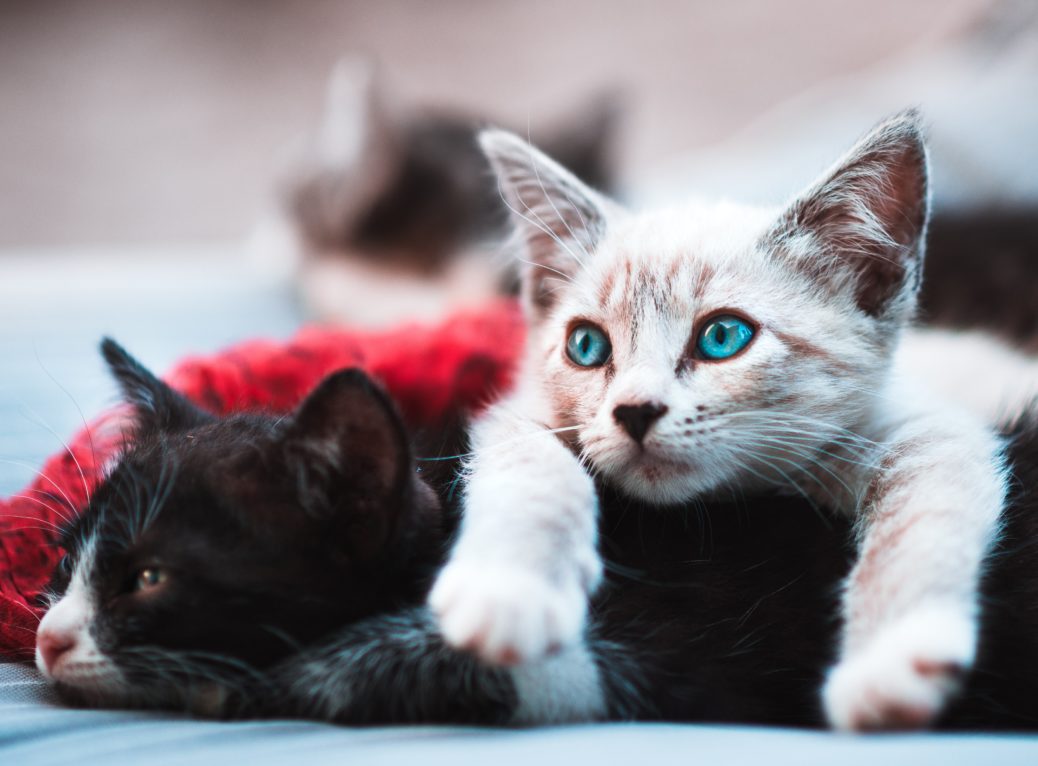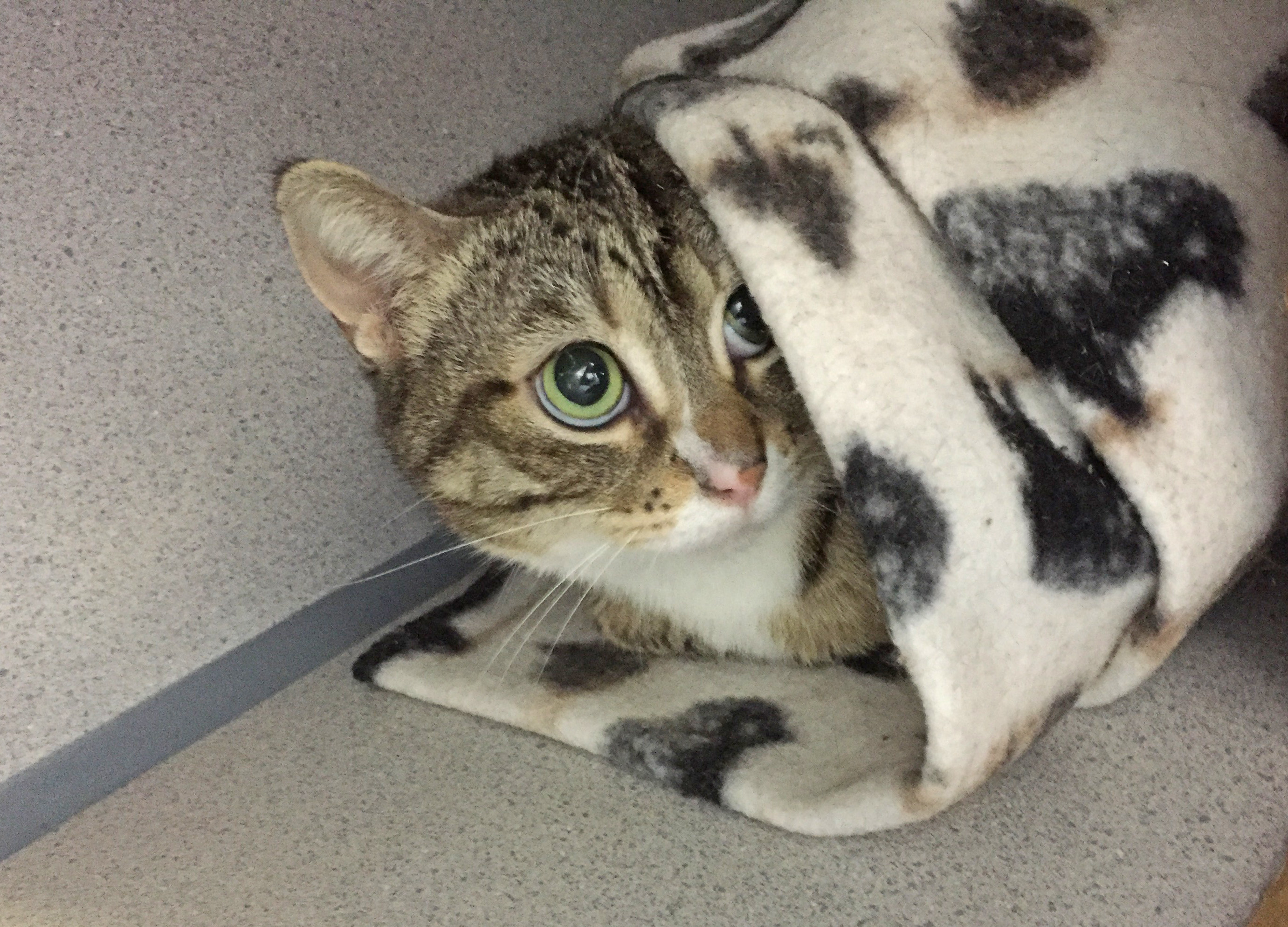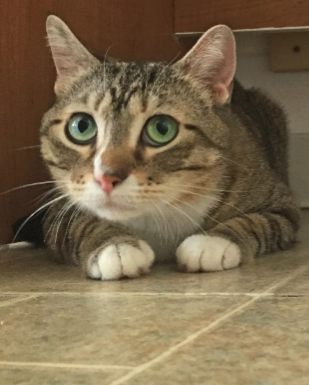Why Can’t We All Just Get Along? Help for the Multi-cat Household
By Cheryl Kolus, DVM
In many ways, our pet cats today are not that different from their wild ancestor, the African wildcat. They even look similar. According to Wild Cats Magazine, the African wildcat is mostly nocturnal, hides during the day, tries to intimidate opponents by making itself look larger, and females defend their territory against intruders. Sound familiar?
African wildcats, as well as feral cats, are solitary hunters. This makes perfect sense if you think about it: Their prey might include mice, birds, even insects. Not really enough food to invite friends for dinner.
Although African wildcats are fairly solitary, we know feral cats often live in close proximity to one another when resources are plentiful. Females will help care for and even nurse kittens from other queens.1 However, feral cats have the option of searching out new territory if not accepted into a colony. They have plenty of space to avoid fights if a resource is deemed not important enough to risk injury.
Now let’s open the door to your multi-cat home and ask some questions. If you have cats that don’t get along, the answers might help you understand why, as well as what you can do to foster peace.
Did your cats choose to live together?
No, you made that choice for them. And since cats are so individual, it can be hard to know how it’s going to turn out when you bring home a new cat. That’s why slow, gradual introductions are so important to have the best chance for success. Even if your cat and/or the new cat has done well with cats in the past, that doesn’t mean they will do well together, unfortunately. (Just like people, huh?)
Do your cats have the option of moving to a new territory if they don’t want to interact?
Maybe, depending on how we—and more importantly, your cat—define “territory.” One way to increase territory is to add vertical space in the form of shelves, cat trees, and furniture arrangement. You might also consider an outdoor enclosure. There are so many examples of both vertical space and “catios” online today, it’s easy to get good ideas to implement in your home. Another option is to time share the house—one cat is confined while the other can roam, and then switch—or to divide the house with tall baby gates or closed doors so they both have multiple, but different, rooms to peruse. Hopefully, this will be temporary while you work on repairing their relationship, but in some cases a permanent division is best. Even rehoming one cat, as hard as it is emotionally for you, might be appropriate and in the cats’ best interests.
Are resources abundant so the cats can get what they need with minimal competition and stress?
Each cat should have their own feeding area, water bowl, resting place, perch, hiding place, litterbox and scratching post. A common problem in cases of inter-cat aggression is that one cat blocks the other cat from accessing a resource. This can often be quite subtle and missed by owners. The bully cat might simply lie in one room and stare at the victim cat who is considering entering the room. Sometimes it helps to place a bell on the bully cat’s collar to alert the victim cat to their whereabouts. Relationships like this can lead to the victim cat hiding a lot and possibly developing litterbox issues. Ensuring plentiful resources, however, will make this less of an issue. Each cat should also have individual social and play time with a preferred person.
Are their needs being met?
Providing enrichment makes for happier cats. This means setting up the environment such that cats can engage in their natural behaviors. In addition to vertical space and safe outdoor access, also add foraging opportunities, enticing scents such as catnip or silver vine, window views with bird houses or squirrel feeders outside, toys they love (rotated to keep them interesting), clicker training, calming music and again, quality time with you.
Why should they tolerate another cat in their territory?
Because we’re going to make it worth their while! Depending on the severity of the issue, you may need to separate the cats and work on reintroductions. We won’t go into all the details here, but the overriding theme is that the smell, sight or sound of the other cat means something good happens for them. This usually means a yummy treat or meal, but it could also mean playtime or petting if they enjoy that. It’s very important to avoid negative interactions while you’re working on developing or repairing their relationship. Practice makes perfect, so don’t let them practice unwanted behaviors like hissing or growling at each other. Playing or clicker training within sight of the other can be positive; in fact, clicker training each cat to go to a specific mat or perch can help interrupt a potential agonistic event.
Finally—or perhaps firstly—if two cats that used to get along now aren’t for no obvious reason, a veterinary checkup for both is a good idea. Pain or other diseases can be contributing factors. Anti-anxiety medications or supplements can be helpful, calming the cats enough so that with behavior modification, they can learn better coping strategies.
So don’t give up on your kitty companions! Like Zoey and Masha, with good management, appropriate behavior modification and lots of patience, in most cases, cats can learn to live together in peace.
***This article was written by Cheryl Kolus MS, DVM and originally posted November 21, 2018 on drsophiayin.com/blog.







